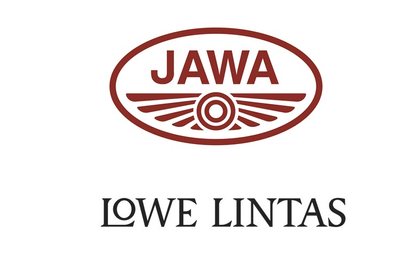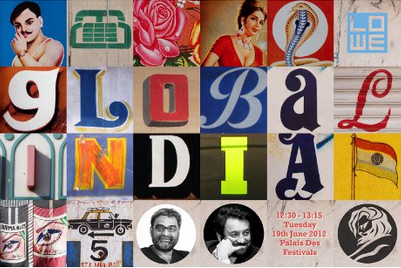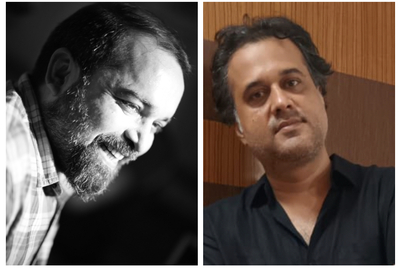.jpg&h=570&w=855&q=100&v=20250320&c=1)
Rowan: Good morning Cannes, Bonjour, Namaste. I have been looking through the history books and from what I can tell, since the first time the festival was created in 1954, there hasn’t been a seminar dedicated to Indian creativity. So, Balki, why now? What’s happening in India right now that is so exciting?
Balki: There is a lot of money in India. So I think India is exciting. Also, I think so far India has been going to the globe as far as communication has been concerned. The globe’s been the jury. Now the globe is coming to India and India’s the jury. I think there is a lot of necessity to understand India and a lot of desire from the world to understand this jury that is judging their products.
Rowan: What is it that works for brand advertising in India that the rest of us can learn from?
Balki: There are so many things that work, but why they work will make little sense (to people) outside India.
Indian advertising works very well when you tap into Indian culture, especially when you tap into the differences in the culture (and not the similarities with global culture). There is a tendency when we do global advertising to look into the similarities of cultures and not the differences.
Rowan: Can you share an example of something you have worked on, which was born in India and is uniquely right for that culture?
Balki: I and a lot of others have done such work. The ad that comes to my mind is one for Camlin markers.
In India, when a woman gets married, there is something called the ‘bindi’ or ‘sindoor’ that you put on your forehead. When the husband dies, there is a ritual involving the removal of the bindi - a sign to show that your husband has passed away. The ad is about the death of a husband and people trying to remove the wife’s bindi. They are unable to remove it as at some point in time, the husband didn’t use the bindi but used the marker (which refused to get erased). So that was a very funny ad in India. But nobody would get it outside because no one would get the significance of what a bindi means.
You make up the joke but nobody else gets the significance of the joke (unless you know the cultural context). You cannot explain this to the entire world and that happens to me day in and day out.
Rowan: So let’s reverse that. Any instances of a western company or brand trying to create communication with a western culture unsuccessfully?
Balki: There are brands that have tried to implement global ideas in India and one of the examples that I keep giving is that of Unilever.
We started doing ‘Dirt is good’ in India and for a couple of years, we tried to test every international campaign that was done including one where kids are playing by the beach. I think some of them were Cannes winners too. It just didn’t appeal to people (in India).
The fundamental thing in India is ‘Dirt is bad’. It is a dirty country. So therefore when you say ‘Dirt is good’ in a country where people want to be clean, you have to give a damn good reason why ‘Dirt is good’.
It took us a couple of years to break the entire global thinking and come back to the roots and do it for India very specifically, which actually became the model for a few cultures after that.
Rowan: Balki, so how does this hunger for melodrama (in India) translate into advertising that is in a way different from typical western advertising?
Balki: It does. I don’t think it is just melodrama. There are a lot of other things. There is a general loudness (you could say). What is interesting about it is that it gives the world a point of difference. I think sometimes we appreciate difference a little too late. And in a creative world, where there is a difference, I think there is a point of interest. And once you look at that difference and start celebrating that and try and find out what makes it so different, then you have a new culture, a new freedom of expression which can actually keeps the world’s interest for the next five or ten years.
You should really grab it - not superficially but look deeper into it. I think the points to celebrate or the points of differentiation in India are plenty to be used.
Rowan: How does that change when globalisation accelerates? How worried are you that what defines India as culturally distinct is going to be watered down?
Balki: I think at the root of it… and Michael Wood put it beautifully in his ‘Story of India’. He says something fascinating (something like this): ‘India has to adapt. It has to change. It has to absorb the wounds of history. And yet, also use the gifts of history.’
The strength for India, and the desire for India, is to remain as India. So you see signs of globalisation, and by globalisation you mean malls, brands, cellphones, technology, few roads and better vehicles - that’s the extent of globalisation. At the core of it, you are as people what you are. And that will never change. And that is the strength.
Rowan: One thing that is changing is social media absorbing people’s engagement. How is that changing your job in the short span?
Balki: It isn’t really, because social media has become more a commentator of what’s happening in the country. You take social media or any digital medium; it is about what’s happening in the country. Technology is not being used to globalise. Nobody is talking of the elections in Greece on social media in India. Everybody is talking about what’s happening in India. Technology is being used to make it even more about India than anything else.
Rowan: Shekhar, you are quite passionate about social media. I think it’s quite rare for you to be away from Twitter for so long. And you talk about social media as the real influence economy now. Where do you see all this moving?
Kapur: If the new real estate is social media, they have to adapt to the new real estate. Couple of answers to some of the questions raised earlier - In India, social media has a huge opportunity. The great drivers of social media are the young population. Very soon 15 per cent of the world’s teenage population is going to be living in India, and if we can connect them to social media worldwide, they will become the influencers and we are about to see what we call the ‘influence economy’.
That doesn’t mean that India will become the dominant economy of the world, but it will become the influence economy of the world.
Then when you advertise to them, talk to them or sell your brands to them, they will mould it in their own ways and then influence others. So that’s one great opportunity.
Rowan: You have been a bit of an influencer, with what you have done recently where you have been trying to create a public social commentary about some of the quality of messages in advertising? A few months ago, you created the hashtag #adswedontbuy to challenge advertising that has social impact, like skin whitening creams, high fat food targeted at children, etc. Tell us about the impact of your hashtag.
Kapur: I was very keen to understand how people react. People do focused groups in advertising, and focused groups are really small. I thought Twitter provides a great opportunity to create large amounts of data to understand how people react to ads. So I created the hashtag and I put up some of the ads that I don’t buy. I really didn’t say that people should not buy this or that.
I created some ideas and put them out and wanted to see how people react. It’s not as if skin whitening creams have stopped selling, they are still selling like hotcakes, probably even more after my hashtag. But the fact was, it created buzz.
In 24 hours, four million impressions of that hashtag were generated of people writing in to say we don’t like or buy this or that. I said, “Wow, this is a data mine.” I just put it out there. It went beyond me and caught on. And that’s the power of social media. And it was done free.
Rowan: Is it a nuisance or useful research?
Balki: It is research. I don’t know whether it is useful or useless. But you know what happens? Where social media is in India is that it has become a social commentary place, rather than a medium to persuade people to buy something or become a part of a brand’s culture.
If you take Bollywood, they had used this for promotions. There have been films that had maximum number of followers, trending on twitter, etc., which have actually fallen flat at the box office on the opening day. So, right now, Indians are using these mediums as a vent - to express themselves because they haven’t had a medium to express themselves.
Rowan: So I wonder whether your role as a creative professional is being challenged by this crowdsourcing idea generation. There are websites like Kickstarter, there’s the Cannes Academy of Education, there’s this peer-to-peer trend. How is it impacting this world? Is it changing the world?
Balki: Not so far. In five or ten years, for sure. Ideas are not the prerogative of any one person. If anybody has an idea, the brand needs to benefit from that. That’s always going to be the way of the world. You can’t stop an idea from where it is coming from.
Rowan: Does an Indian consumer increasingly have a preference for the global brands?
Balki: There is a fascination with global brands. But this fascination is limited to a few people who know it is a global brand. Lot of global brands, when they come to India, they have to behave so Indian that lot of people don’t know it is a global brand. At the end of six months, you just think it is an Indian brand. Take Pepsi for instance. From the time they came in, they have been behaving like a hardcore Indian brand. Cadbury is doing some of the most iconic Indian stuff in the country. Coke did the same thing when they came to India. They really are Indian brands for Indians.
After a very small period of time, you stop thinking of whether it is a local or global brand. You just love the brand for what it is.
Rowan: I just wanted to leave with one quick fire thought from both of you. There are people here and many of them representing brands, and they want to succeed in India. Piece of advice – how do we win in the Indian market?
Balki: For the marketers coming from outside: learn a bit about India before marketing. Second, watch a lot of Indian movies. Third, watch Michael Wood’s documentaries. Fourth, just leave it to the Indians.
Kapur: The Western attitudes have not changed. They still look upon India as a market. The day you stop looking at India as a market and look upon it as a culture, and work from within the culture, you will succeed.










